#voiceroid 2
Text
happy birthday iori yuzuru(voiceroid2) !!!! [feb 27]

iori yuzuru is a japanese synth developed by ah software(ahs) in collaboration with AI, Inc., and initally released in 2020. he is voiced by Matsuura Yoshiyuki and illustrated by Yoshida Yoshitsugi. yuzuru was first released on 27 feb 2020 for voiceroid2, then on 22 feb 2021 for a.i.voice, then on 29 sep 2022 for seiren voice, and most recently on 22 dec 2023 for a.i.voice2. ahs said that yuzuru might not be japanese, nor even human
#bday#vocal synth#vocal synthesizers#vocal synths#vocalsynth#vocalsynths#voiceroid#voiceroid 2#voiceroid2#ai voice#aivoice#a.i.voice#seiren voice#ai voice 2#aivoice2#a.i.voice2#iori yuzuru#yuzuru iori#ahsoftware#ah software#ai ince#feb 27#february
10 notes
·
View notes
Text

二人笑い合う日々を クモヒトデのうまる砂の上で
#my art lol#vocaloid#vocaloid fanart#voiceroid#neutrino#kotonoha akane#kotonoha aoi#aoi kotonoha#akane kotonoha#kotonoha sisters#kotonoha twins#betrayed oliver lowkey by drawing this on his bday (finished touching it up today cause i got distracted last night lol) lmaoo sorry dude#was going for a sorta melancholic dreamy/distorted feel but idk if that came across hkjsg. this song has a hold on me i really like ittt#why is it always the shit i find by accident lmao. zamn its also the 2 min songs that go hard sheesh#also ive just been wanting to draw these two again. im always hesitant b/c people can be. weird :/ but#also i do what i want. also also i just realized theres a detail here a little fucked up gahhrhah but i dont feel like fixing it...
21 notes
·
View notes
Photo

you never told the truth in the end
#fruitloid#voiceroid#iori yuzuru#thinking about quiet room again. as i am apt to do#the companion piece that may never exist: len with the eye covering lol#i feel that the charm to my iori is the fact that his eyes are dark.. having them light here feels kinda odd#ah well. too late to change it now#i try not to spend longer than 2 hours on the more complex art i do here#and ive hit my time limit already#im rooting for everybody .. lets do our bests today too
12 notes
·
View notes
Text
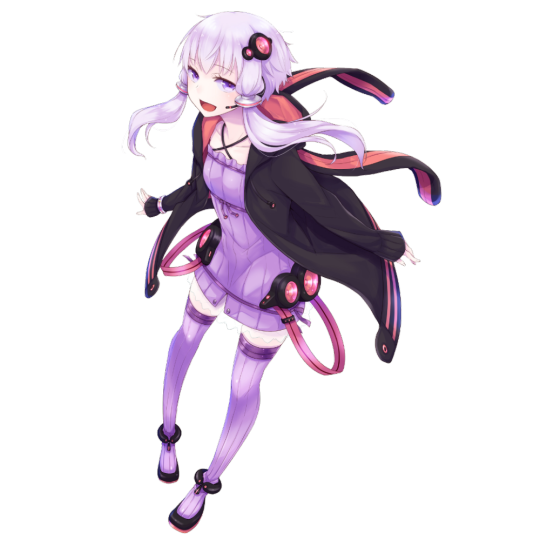

Yuzuki Yukari song:
youtube
Yongye Minus song:
Propaganda under the cut
Yuzuki Yukari:
-Vocaloid VB was marketed along with VOICEROID (speech synth/fancy tts) on release
-Has an extended sample library in addition to her base vb (see https://youtu.be/HY9GD72rKs0 for a demo in song form)
-Exists across 6 different software (Vocaloid, CeVIO, VOICEROID, A.I.VOICE, Seiren Voice, Voidol)
-Has an official racing design that is very cool
-Moon rabbit themed -Has hidden holographic bunny tail on her base outfit (check the character sheets!)
-Purple and pink
-Only vsynth I've given my heart and soul to 💜
-Purple and pink
Yongye Minus:
She has a really nice soothing voice, which fits calm and sad songs very well. She can sing in many languages and really excels in Mandarin (native), Japanese and English. She's one of the most high-quality vocals on the market. Her Design is also very cute, the dress is very well-designed. I especially love the crystal ornaments. Overall it has a very nice purple colour-scheme and i think it fits her voice perfectly. If she wasn't so hard to buy outside of China i think she would be way more popular and she definitely deserves it!
31 notes
·
View notes
Text
an oral history of vocaloid
ive seen a lot of (very misguided) discussion about vocaloid/vsynth in regards to AI voices discourse, so i thought it would be a good idea to sit down and explore vocaloid as a software, as well as mentioning other software of the same genre, to give people who dont really know much a better understanding
first and foremost: i dislike AI voices that are in unregulated spaces right now. actors who are finding their hard work end up on some website for anyone to use without compensation is devastating, and shows a lack of respect for the effort it takes in the field.
however, vocaloid has a much longer history that pre-dates these aggregate sites. vocaloid software was first released in 2004, and was initially marketed towards professional musicians. vocaloid's second version of the engine, however, decided to broaden the market towards general consumers, pitching it as helpful software to those who wanted to produce music, but didn't have the personal skill or ability to have someone else sing for their music (range, note holding, etc). amateur musicians wouldn't know how to direct someone to tackle a lyric persay, but using software would be easy to learn and they would learn the terminology associated with certain performance decisions.
in vocaloid 2's era, miku was released. miku's voice provider is Saki Fujita, a well respected voice actress who actually does a lot of work in anime as well as video games! the popularity of miku is its own separate post of history, but the explosive nature of it, i would argue, is the reason that vocaloid and other commercial voice synthesizer software ultimately ended up geared towards all consumers instead of just professional musicians. (crypton and yamaha did absolutely still cater to professional musicians, having private or non released banks only for certain companies/contractors to use though).
flash forward, and technology has developed way further. in 2013, cevio released, and in 2017, synthV debuted. by this point, vocal synthing has expanded from just singing software to also include software intended for just speaking (voiceroid by AHS software) and the idea of an AI bank to improve the quality and clarity of voice banks is becoming more feasible.
however, i wouldnt say the developments in AI voices came strictly from this side of things. in fact, i distinctly remember back in the early 2010s, people were using websites with voice models of characters like glados (portal) and spongebob. these audio posts were seen as novelties, and admittedly theyre fun just to mess around with (and people often find the spongebob rap music that yourboysponge makes to be pretty well done!), they do lead the way to better developed technology that doesnt compensate the artist...
so back to vocaloid. the thing about vocaloid (and all vocal synthesizers) is that contracts are in place to give appropriate time and compensation, along with permission to even use the person's voice. saki fujita continues to update miku's voicebank because she is being paid well to do so. this can be said for all vocal synth products. because these companies (crypton, ahs software, internet co, etc) specialize in making these tools and products for it, they have the appropriate knowledge on what proper compensation looks like. a random person grabbing a "raiden shogun genshin ai voice" model has none of those things. the voice actress doesnt get money off of that. its stolen work. AI can be used ethically, but it has to be done with regulation.
im leaving out specifics on certain vocaloids/vsynthesizers since its tangential to this post at best, but im making this so people have a better understanding of the history and intended usage of vocal synthesizer software. thank youuuuu
27 notes
·
View notes
Text
I saw a few people saying they didn't recognize a lot of the vvv music characters and I think the reason is it's a very, very talkbank-heavy show!
A few characters are definitely new, but one reason why you might not recognize a large portion of them is that in the lineup, eight of them started out as talkbanks, seven only have a talkbank, and there's only one single character that doesn't have one.
If anyone's curious about who all these characters (talkbank or otherwise) are and how they may relate to characters you do know, I've made *unrolls paper* the promotional image into an extremely detailed infographic. The biggest icon is the engine they started out on, and the smaller ones are where they got banks after that.
Below the cut I break down the lineup, starting with Vocaloids and Vocaloid-related characters (+ UTAUS), then the singing characters from other engines (like SynthV), then the talkbank-only characters, telling you a bit about all of them.

[ID: The VVV Music Live promotional graphic—an image with all of the performing characters in boxes—with text and icons over it detailing who the characters are and which engines they’re on, turning it into an infographic.
A guide to the engines at the top reads as follows: A. Singing: 1. Vocaloid, 2. UTAU, 3. CeVIO + Voisona (branched out into talkbanks too), 4. SynthV. B. Talking: 1. Voiceroid. A few V3-V4 Vocaloids were given talkbanks on Voiceroid (Una), some lining up with their release (Yukari, Sora). You can hear Yukari talking in some older Vocaloid songs for this reason. Some Voiceroids went on to get singing banks on Vocaloid (Zunko, Akari), and some eventually got singing banks on SynthV (Maki, the Kotonohas, Tsuina-chan). 2. A.I.VOICE. You may have recently seen Gumi and Zola Project get A.I.VOICE talkbanks. 3. Made Vocaloid Zunko’s pet human, gave SynthV Genbu and his friends talkbanks, introduced WhiteCUL. 4. VOICEPEAK. Various banks. C. Singing again: 1. NEUTRINO: Zunko’s sister, UTAU Kiritan, was their first bank. 2. CoeAvatar. See post. D. Morph: 1. Voidol, 2. Seiren Voice. Additional text reads “talk engines made specifically for one/a few vocal synths (like Gynoid Talk) are excluded.”
The characters are as follows: 1. Tohoku Itako. Started on UTAU. Also on Voiceroid, NEUTRINO, CeVIO, and Seiren Voice. Has a talkbank. 2. Zundamon. Pet form started on UTAU. Human form started on VOICEVOX. Also on NEUTRINO, Seiren Voice, and VOICEPEAK. Has a talkbank. 3. Tohoku Kiritan. Started on UTAU. Also on Voiceroid, NEUTRINO, and CeVIO. Has a talkbank. 4. Tohoku Zunko. Started on Voiceroid. Also on Vocaloid 3 and 4, Voidol, NEUTRINO, CeVIO, and VOICEPEAK. Started as a talkbank. Itako and Kiritan are Zunko’s sisters, and Zundamon is her pet. 5/6. Kotonoha Akane and Aoi. Started on Voiceroid. Also on SynthV, A.I.VOICE, Voidol, NEUTRINO, and Seiren Voice. Started as talkbanks. Akane and Aoi are sisters. 7. Iori Yuzuru. Started on Voiceroid. Also on A.I.VOICE and Seiren Voice. Currently talkbank only. 8. Kurita Maron. Only on A.I.VOICE. Currently talkbank only. 9. Jashin-chan. From the series Dropkick on My Devil! On VOICEPEAK. Currently talkbank only. 10. Haruno Sora. Started on Vocaloid 5 and Voiceroid. Also on SynthV. Has a talkbank. 11. Tsurumaki Maki. Started on Voiceroid. Also on SynthV and CeVIO. Started as a talkbank. 12. ONE. Only on CeVIO. Has a talkbank. 13. IA. Started on Vocaloid 3. Also on CeVIO. Has a talkbank. IA and ONE are sisters. 14. Kasukabe Tsumugi. Only on VOICEVOX. Cousion of Vtuber Kasukabe Tsukushi. Talkbank only. 15. Kamui Gakupo. Started on Vocaloid 2. Also on Vocaloid 3 and 4. No talkbank. 16. Otomachi Una. Started on Vocaloid 4. Also on Vocaloid 6, Voiceroid, and Voidol. Has a talkbank. 17. Gumi. Started on Vocaloid 2. Also on Vocaloid 3, 4, and 6, Voidol, and A.I.VOICE. Gakupo, Una, and Gumi are Internet Co. Vocaloids. 18. Sato Sasara. Started on CeVIO. Also on Voisona. Has a talkbank. 19. Suzuki Tsudumi. Only on CeVIO. Started as a talkbank. Sasara and Tsudumi are friends. 20. Kyomachi Seika. Started on Voiceroid. Also on SynthV. Started as a talkbank. 21. Tsuina-chan. Started on Voiceroid. Also on SynthV. Started as a talkbank. 22. Hasuki Nemu. Only on CoeAvatar. Talkbank only. 23. Namine Ritsu. Started on UTAU. Also on DeepVocal, VOICEVOX, ACE Studio, and various other talk programs. Has a talkbank. 24. Hanakuma Chifuyu. Only on SynthV and CeVIO. Has a talkbank. 25. Koharu Rikka. Only on SynthV and CeVIO. Has a talkbank. 26. Natsuki Karin. Only on SynthV and CeVIO. Has a talkbank. Chifuyu, Rikka, and Karin are friends. 27. Flower. Started on Vocaloid 3. Also on Vocaloid 4 and CeVIO. Has a talkbank. 28. Kizuna Akari. Started on Voiceroid. Also on Vocaloid 4, Voidol, CeVIO, A.I.VOICE, Seiren Voice, and Voisona. 29. Yuzuki Yukari. Started on Vocaloid 3 and Voiceroid. Also on Vocaloid 4, Voidol, CeVIO, A.I.VOICE, Seiren Voice, and Voisona. Akari and Yukari are Vocalomakets’ Vocaloids. Yukari is the moon and Akari is the stars. 30. WhiteCUL. Only on VOICEVOX. Talkbank only. 31. ROSA. Only on CeVIO. Talkbank only. WhiteCUL and ROSA are Vocaloid CUL’s sisters. End ID.]
On Voiceroid and CeVIO engines
You'll see that several synths here are from Voiceroid, which is a pretty old talkbank engine. If you're interested in Voiceroid characters like Yukari and Akari, Maki, Akane and Aoi, and others, producer GYARI was making iconic and comedic songs with them before they got songbanks, and I'd definitely recommend you check them out. A couple CeVIO related notes, several characters here have the CeVIO logo by them because they have CeVIO talkbanks, not necessarily singing banks, and Voisona is CeVIO's new engine. Onto the character explanations!
Vocaloids and Vocaloid-related characters / UTAUS
Vocaloid: Zunko. Originally created to promote disaster relief in the Tōhoku region, she's since gotten Voiceroid (talking) and Vocaloid (singing) banks, as well as a 24-minute animated movie. She has a Zunda mochi (green soybean rice cake) motif.
Itako and Kiritan are Zunko's sisters, introduced as UTAUs with newer voicebanks on Neutrino. Itako dreams of restoring her power of the nine-tailed fox, and Kiritan is a gamer.
Zundamon is Zunko's pet. They recently gave them a human form and a Neutrino voicebank, as well as multiple talkbanks.
Vocaloid: Sora. One of the only V5-introduced characters. Made a good impression by having a design where she looks like a pirate as well as a pretty, flowy one. Released with a Voiceroid talkbank.
Vocaloid: IA. Started out as a Vocaloid and was later released on multiple CeVIO engines. The CeVIO Vocaloid.
ONE (pronounced oh-neh, like how IA is ee-uh) is IA's sister. She's only on CeVIO engines.
Vocaloids: Gakupo, Gumi, Una. You probably know at least Gakupo and Gumi. Una, just because she's a little more recent, is a younger, eel-themed Vocaloid from the same company as the others (Internet Co.). She also got a Voiceroid bank.
Vocaloid: flower. Famous, androgynous. Got two Vocaloid banks before recently getting one on Cevio AI.
Vocaloid: Yukari. Moon rabbit theme and lots of voicebanks. A handful of famous songs, like There's Supposed to Be a Cheat Code for Happiness and Chururira・Chururira・Daddadda! Did some talking in a few older songs because she was a decently popular Vocaloid with a Voiceroid talkbank.
Akari is Vocalomakets's other Vocaloid, with a starlight theme. She also has a Voiceroid talkbank.
Vocaloid: CUL. She isn't part of the lineup, but she has sisters who are, so I'm covering her. Another Internet Co. Vocaloid, CUL started out as the mascot for the show VOCALO Revolution, which aired interviews with Vocaloid developers and producers, and showcased PVs. Videos featuring CUL used VY1's voice before she debuted as a Vocaloid herself.
ROSA and WhiteCUL are CUL's sisters. CUL was revealed to have several sisters, each named a variation of "CUL," except for ROSA. So far, only these two have designs and banks, and currently, they only have talkbanks, although ROSA is planned to get a SynthV voicebank.
You likely know Ritsu, a VIPPERloid UTAU, who went on to get voicebanks on DeepVocal and ACE Studio, as well as several talkbanks.
SynthV characters
Tsuina-chan is an ogre hunter. She started out on Voiceroid and eventually got a voicebank on SynthV.
Seika is the district mascot for Seika, Kyoto, Japan. She was a Voiceroid who later got a SynthV voicebank.
Rikka, Chifuyu, and Karin are three high school students in a music club. Rikka's character is up to interpretation, while Chifuyu plays drums, takes photos with an old camera, and dislikes sweetness, and Karin plays bass, likes archery and cute things, and dislikes matcha. All three have CeVIO talkbanks.
Akane and Aoi are twin Voiceroid talk vocals who went on to get SynthV voicebanks.
Maki is another Voiceroid vocal who got a SynthV bank. Like Kiyoteru, she also has a band comprised of characters that don't sing.
CeVIO singing characters
Sato and Tsudumi are friends who don't have a lot of interests in common. Sato started out with song and talk banks, whereas Tsudumi started out talk-only and got a songbank later on.
Talkbank only characters
Yuzuru is described as "kind and gentle, but rumored to be scary when angered," and "maybe not human." He started out on Voiceroid.
Maron's appearance is based chestnuts and autumn themes. He's currently only on A.I.VOICE.
Jashin-chan is from the series Dropkick on My Devil! She's currently only on VOICEPEAK.
Tsumugi is the cousin of Vtuber Kasukabe Tsukushi. She's only on VOICEVOX.
Nemu, and the engine her talkbank is on, CoeAvatar, have heavy NFT involvement.
#I did this like a week ago but since the viewing period is ending and I'm about to post screenshots of these charas I was like#oh yeah I should post this first#vocaloid#voiceroid#cevio#utau#synthv#a.i.voice#voicevox#voicepeak#neutrino#if you read all this: that's wild. thanks#if you just looked at the chart: thank you it wouldn't leave my brain until I made it#thoughts
15 notes
·
View notes
Note
hhi how is it like beign a vogaloid?
Vocaloid (ボーカロイド, Bōkaroido) is a singing voice synthesizer software product. Its signal processing part was developed through a joint research project led by Kenmochi Hideki at the Pompeu Fabra University in Barcelona, Spain, in 2000 and was not originally intended to be a full commercial project.[1] Backed by the Yamaha Corporation, it developed the software into the commercial product "Vocaloid" that was released in 2004.[2][3]
The software enables users to synthesize "singing" by typing in lyrics and melody and also "speech" by typing in the script of the required words. It uses synthesizing technology with specially recorded vocals of voice actors or singers. To create a song, the user must input the melody and lyrics. A piano roll type interface is used to input the melody and the lyrics can be entered on each note. The software can change the stress of the pronunciations, add effects such as vibrato, or change the dynamics and tone of the voice.
Various voice banks have been released for use with the Vocaloid synthesizer technology.[4] Each is sold as "a singer in a box" designed to act as a replacement for an actual singer.[1] As such, they are released under a moe anthropomorphism. These avatars are also referred to as Vocaloids, and are often marketed as virtual idols; some have gone on to perform at live concerts as an on-stage projection.[5]
The software was originally only available in English starting with the first Vocaloids Leon, Lola and Miriam by Zero-G, and Japanese with Meiko and Kaito made by Yamaha and sold by Crypton Future Media. Vocaloid 3 has added support for Spanish for the Vocaloids Bruno, Clara and Maika; Chinese for Luo Tianyi, Yuezheng Ling, Xin Hua and Yanhe; and Korean for SeeU.
The software is intended for professional musicians as well as casual computer music users.[6] Japanese musical groups such as Livetune of Toy's Factory and Supercell of Sony Music Entertainment Japan have released their songs featuring Vocaloid as vocals. Japanese record label Exit Tunes of Quake Inc. also have released compilation albums featuring Vocaloids.[7][8]
Technology
Voice model developed before the Vocaloid, Excitation plus Resonances (EpR) model,[9] is a combination of:
Spectral Modeling Synthesis (SMS)
Source-Filter model
The model was developed in 2001 as a source-filter model for voice synthesis,[10] but was only implemented on top of the concatenative synthesis model in the final product[citation needed] as a method of avoiding spectral shape discontinuities at the segment boundaries of concatenation.[11]
(based on Fig.1 on Bonada et al. 2001)
Vocaloid's singing synthesis [ja] technology is generally categorized into the concatenative synthesis[12][13] in the frequency domain, which splices and processes the vocal fragments extracted from human singing voices, in the forms of time-frequency representation. The Vocaloid system can produce the realistic voices by adding vocal expressions like the vibrato on the score information.[14] Initially, Vocaloid's synthesis technology was called "Frequency-domain Singing Articulation Splicing and Shaping" (周波数ドメイン歌唱アーティキュレーション接続法, Shūhasū-domain Kashō Articulation Setsuzoku-hō) on the release of Vocaloid in 2004,[15] although this name is no longer used since the release of Vocaloid 2 in 2007.[16] "Singing Articulation" is explained as "vocal expressions" such as vibrato and vocal fragments necessary for singing. The Vocaloid and Vocaloid 2 synthesis engines are designed for singing, not reading text aloud,[17] though software such as Vocaloid-flex and Voiceroid have been developed for that. They cannot naturally replicate singing expressions like hoarse voices or shouts.[18]
System architecture
Vocaloid system diagram
(based on Fig.1 on Kenmochi, Ohshima & , Interspeech 2007)
The main parts of the Vocaloid 2 system are the Score Editor (Vocaloid 2 Editor), the Singer Library, and the Synthesis Engine. The Synthesis Engine receives score information from the Score Editor, selects appropriate samples from the Singer Library, and concatenates them to output synthesized voices.[3] There is basically no difference in the Score Editor and the Synthesis Engine provided by Yamaha among different Vocaloid 2 products. If a Vocaloid 2 product is already installed, the user can enable another Vocaloid 2 product by adding its library. The system supports three languages, Japanese, Korean, and English, although other languages may be optional in the future.[2] It works standalone (playback and export to WAV) and as a ReWire application or a Virtual Studio Technology instrument (VSTi) accessible from a digital audio workstation (DAW).
Score Editor
Score Editor (example)
0:29
Song example: "Sakura Sakura"
The Score Editor is a piano roll style editor to input notes, lyrics, and some expressions. When entering lyrics, the editor automatically converts them into Vocaloid phonetic symbols using the built-in pronunciation dictionary.[3] The user can directly edit the phonetic symbols of unregistered words.[13] The Score Editor offers various parameters to add expressions to singing voices. The user is supposed to optimize these parameters that best fit the synthesized tune when creating voices.[12] This editor supports ReWire and can be synchronized with DAW. Real-time "playback" of songs with predefined lyrics using a MIDI keyboard is also supported.[3]
Singer Library
Each Vocaloid license develops the Singer Library, or a database of vocal fragments sampled from real people. The database must have all possible combinations of phonemes of the target language, including diphones (a chain of two different phonemes) and sustained vowels, as well as polyphones with more than two phonemes if necessary.[3] For example, the voice corresponding to the word "sing" ([sIN]) can be synthesized by concatenating the sequence of diphones "#-s, s-I, I-N, N-#" (# indicating a voiceless phoneme) with the sustained vowel ī.[17] The Vocaloid system changes the pitch of these fragments so that it fits the melody. In order to get more natural sounds, three or four different pitch ranges are required to be stored into the library.[19][20] Japanese requires 500 diphones per pitch, whereas English requires 2,500.[17] Japanese has fewer diphones because it has fewer phonemes and most syllabic sounds are open syllables ending in a vowel. In Japanese, there are basically three patterns of diphones containing a consonant: voiceless-consonant, vowel-consonant, and consonant-vowel. On the other hand, English has many closed syllables ending in a consonant, and consonant-consonant and consonant-voiceless diphones as well. Thus, more diphones need to be recorded into an English library than into a Japanese one. Due to this linguistic difference, a Japanese library is not suitable for singing in eloquent English.[citation needed]
Synthesis Engine
Vocaloid Synthesis Engine[21]
The Synthesis Engine receives score information contained in dedicated MIDI messages called Vocaloid MIDI sent by the Score Editor, adjusts pitch and timbre of the selected samples in frequency domain, and splices them to synthesize singing voices.[3] When Vocaloid runs as VSTi accessible from DAW, the bundled VST plug-in bypasses the Score Editor and directly sends these messages to the Synthesis Engine.[13] Pitch conversion Since the samples are recorded in different pitches, pitch conversion is required when concatenating the samples.[3] The engine calculates a desired pitch from the notes, attack time, and vibrato parameters, and then selects the necessary samples from the library.[13] Timing adjustment In singing voices, the consonant onset of a syllable is uttered before the vowel onset is uttered. The starting position of a note ("Note-On") must be the same as that of the vowel onset, not the start of the syllable. Vocaloid keeps the "synthesized score" in memory to adjust sample timing so that the vowel onset should be strictly on the "Note-On" position.[13] No timing adjustment would result in delay. Sample Concatenation
Spectral envelope interpolation between samples
Spectral Peak Processing (SPP) for timbre manipulation (based on Fig.3 on Bonada & Loscos 2003) When concatenating the processed samples, discontinuities are reduced by spreading the phase between samples via phase correction and estimating spectral shape using a source-filter model called the Excitation plus Resonances (EpR) model.[3] Timbre manipulation The engine smooths the timbre around the junction of the samples. The timbre of a sustained vowel is generated by interpolating spectral envelopes of the surrounding samples. For example, when concatenating a sequence of diphones "s-e, e, e-t" of the English word "set", the spectral envelope of a sustained ē at each frame is generated by interpolating ē in the end of "s-e" and ē in the beginning of "e-t".[3] Transforms After pitch conversion and timbre manipulation, the engine does transforms such as Inverse Fast Fourier transform (IFFT) to output synthesized voices.[3]
Software history
See also: List of Vocaloid products
Screenshot of the software interface for Vocaloid
4:00
"Freely Tomorrow" by Mitchie M
A song with vocals provided by the Vocaloid character Hatsune Miku.
Vocaloid
Main article: Vocaloid (software)
Yamaha started development of Vocaloid in March 2000[17] and announced it for the first time at the German fair Musikmesse on March 5–9, 2003.[22] It was created under the name "Daisy", in reference to the song "Daisy Bell", but for copyright reasons this name was dropped in favor of "Vocaloid".[23]
Vocaloid 2
Main article: Vocaloid 2
Vocaloid 2 was announced in 2007. Unlike the first engine, Vocaloid 2 based its results on vocal samples, rather than analysis of the human voice.[24] The synthesis engine and the user interface were completely revamped, with Japanese Vocaloids possessing a Japanese interface.[12]
Vocaloid 3
Main article: Vocaloid 3
Vocaloid 3 launched on October 21, 2011, along with several products in Japanese, the first of its kind. Several studios updated their Vocaloid 2 products for use with the new engine with improved voice samples.[25]
Vocaloid 4
Main article: Vocaloid 4
In October 2014, the first product confirmed for the Vocaloid 4 engine was the English vocal Ruby, whose release was delayed so she could be released on the newer engine. In 2015, several V4 versions of Vocaloids were released.[26] The Vocaloid 5 engine was then announced soon afterwards.
Vocaloid 5
Main article: Vocaloid 5
Vocaloid 5 was released on July 12, 2018,[27] with an overhauled user interface and substantial engine improvements. The product is only available as a bundle; the standard version includes four voices and the premium version includes eight.[28] This is the first time since Vocaloid 2 that a Vocaloid engine has been sold with vocals, as they were previously sold separately starting with Vocaloid 3.
Vocaloid 6
Vocaloid 6 was released on October 13, 2022, with support for previous voices from Vocaloid 3 and later, and a new line of Vocaloid voices on their own engine within Vocaloid 6 known as Vocaloid:AI. The product is only sold as a bundle, and the standard version includes the 4 voices included with Vocaloid 5, as well as 4 new voices from the Vocaloid:AI line. Vocaloid 6's AI voicebanks support English and Japanese by default, though Yamaha announced they intended to add support for Chinese. Vocaloid 6 also includes a feature where a user can import audio of themselves singing and have Vocaloid:AI recreate that audio with one of its vocals.[29]
9 notes
·
View notes
Text
動画にVOICEROIDを使い始めてもう2年が過ぎていた…
VOICEROIDとVOICEVOXのおかげで自分の動画スタイルを何か確立できた感はあるんだよね。鉄道模型動画って基本車両の走行をメインに見せるのが多いから、ひたすらくっちゃべってる動画ってどうだろう、もとより俺の動画ずっとテロップが流れっぱなしの動画だしって思って、1秒以上の空白を極力造らないひたすらしゃべり続ける動画を基本方針にしたんだよね
3 notes
·
View notes
Text
this isnt me being a boomer btw i am a huge fan of whats going on with the vocal synth scene right now especially on the speech synth side. i can also gush for hours about how the community is actually self sustainable now through the passion carried on by participatory events both big (vocacolle) and small (themed song festivals) so the big vocaloid dark age of 2015 probably will never repeat itself— just not enthusiastic aobut anything coming out of dreamtonics specifically (both first party banks and software, since now they have synthv and their new speech synth thing).
honestly i think kanru is an evil little man who doesn't get the community and he never did. it makes me immensely sad that ahsoft hired him out of bitterness over them having a falling off with A.I inc (the people who developed the engine voiceroid/2 were based on)
2 notes
·
View notes
Text
happy birthday otomachi una(vocaloid 4) !!!!!!!!!!! [jul 30]
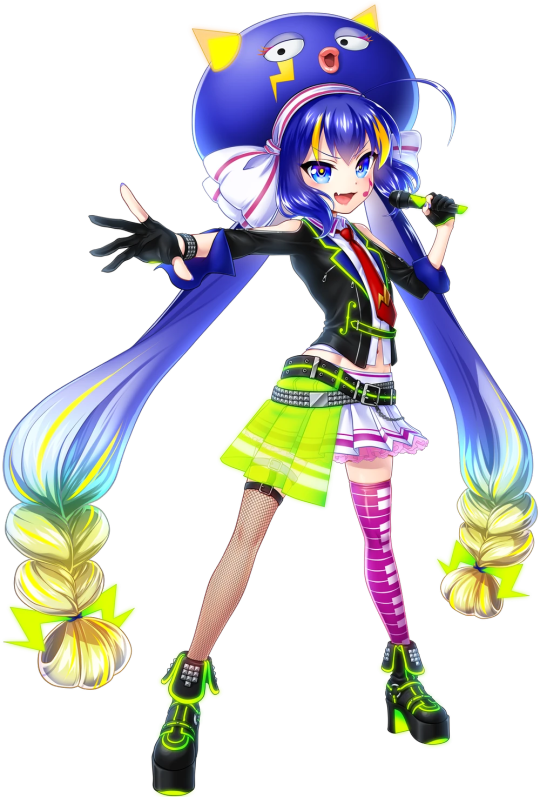
Otomachi Una is a japanese synth developed by Internet Co., and released in 2016. she is voiced by Tanaka Aimi. una was illustrated by Saitou Naoki for her Talk Ex and voiceroid, and by Kurisu Toshi for her v6, but her v4 artist has not been revealed. her 3d modeling was done by kuuwanko, and the rigging by Rennya. on 30 jul 2016 unas v4 "sweet" and "spicy" banks were released, the names of these are possibly reference to the nursery rhyme "What Are Little Boys Made Of?", in which the second stanza reads "What are little girls made of? / What are little girls made of? / Sugar and spice / And everything nice [or "all things nice"] / That's what little girls are made of". on 20 apr 2017 unas talk ex bank was released, on 11 dec 2020 her voiceroid2 bank, on 15 jul 2021 her voidol banks, and on 22 jun 2023 her v6 sweet and spicy. una is 11yo and 148.5cm tall with her hat. her hat is called Ottoman Bō, and often changes expression to match unas.


v4 sweet

v4 spicy
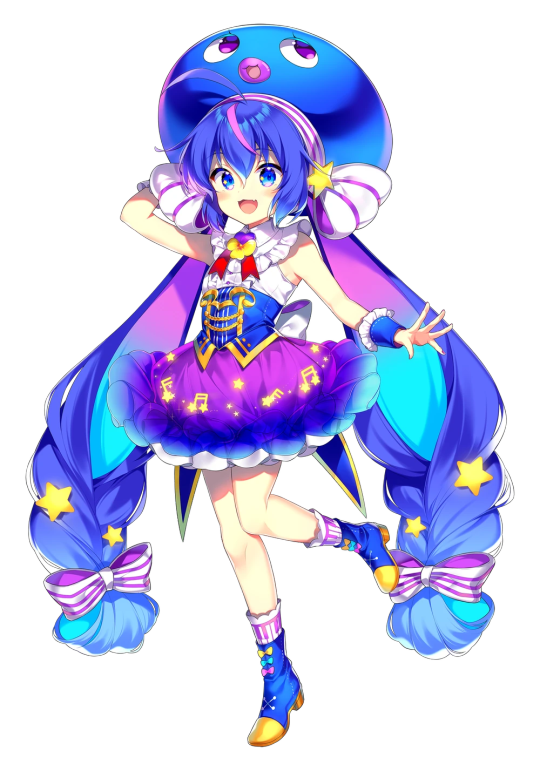
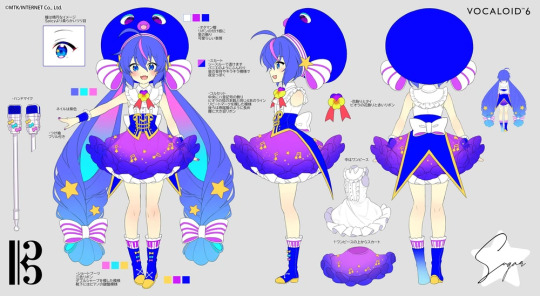
v6 sweet
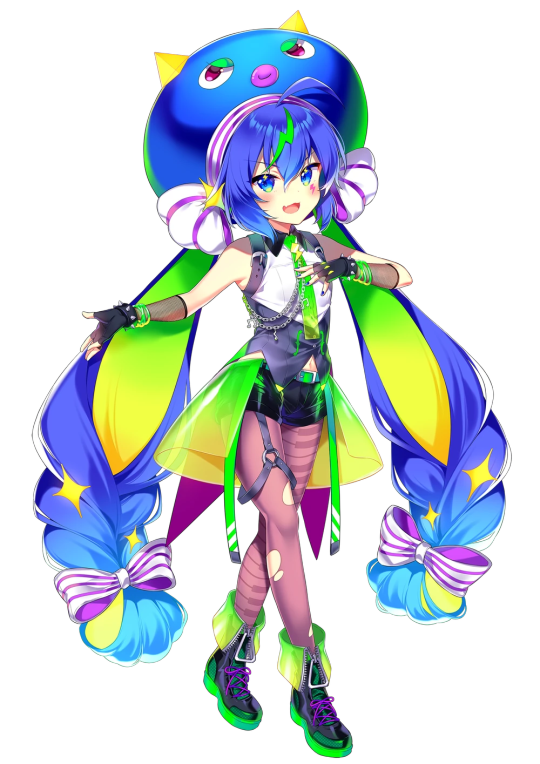

v6 spicy

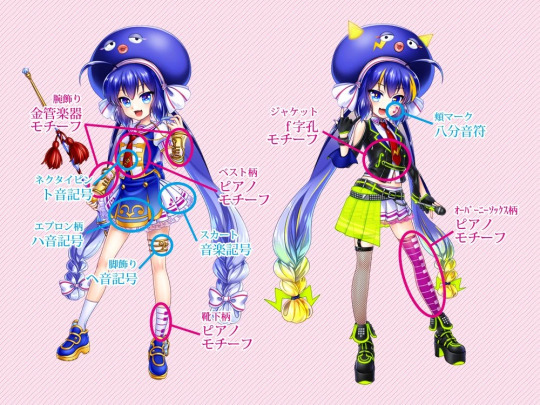
v4 sweet and spicy
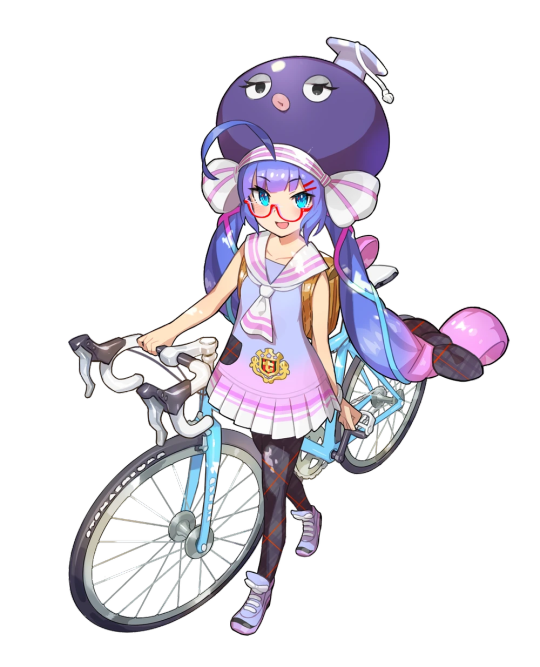
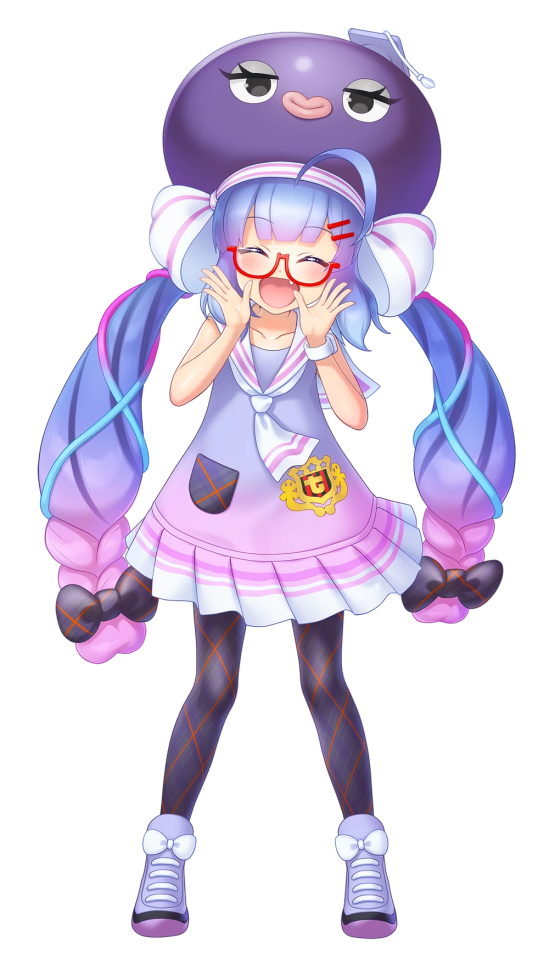
talk ex


voiceroid 2

logo
#bday#vocal synth#vocal synthesizers#vocal synths#vocalsynth#vocalsynths#july#vocaloid#otomachi una#una otomachi#vocaloid 4#vocaloid 6#internet co#talk ex#voiceroid#voiceroid 2#voiceroid2#jul 30#this took 3 tries to post because it kept breaking
44 notes
·
View notes
Text
May 2, 2023
#775 - p.h. (SEVENTHLINKS) [Flower]
Achievement Date: 23-04-01, Upload Date: 20-05-29
One of the little hits of the COVID year part 1, the idea of drug fueled addiction feels quite close at the time and the distorted flower voice is quite distinctive. Two-person group which kind of had a fallout, and therefore only left this song, apparently. Huh.
#776 - Dependent Fritters (Denpol-P) [Hatsune Miku]
Achievement Date: 23-04-01, Upload Date: 14-07-09
Very different from his more modern songs, this song has that 70’s grease, especially with that whack effect on the intro, and there is a lot more effect on this song. And even the lyrics are your typical kind-of seduction song, which is an interesting turn.
#777 - Mikazuki Step (r-906) [Hatsune Miku]
Achievement Date: 23-04-01, Upload Date: 20-03-26
r-906 follows Iyowa as the new and rising VOCALOID producer. This is their first real hit, at least this is when I first encountered them. Apparently the song got popular in late ‘22, so it needed to have a second bump to get here. I think this is more conventional of r-906’s work, which oddly surprises me, considering their later output.
#778 - Capriccio Farce (MothyP) [MEIKO, KAITO, Miku, Rin, Len, Luka, Gakupo, GUMI]
Achievement Date: 23-04-07, Upload Date: 11-10-29
Kind of the big season finale of the Evilicious series, with 8 VOCALOIDS, much akin to Hitoshizu x Yama songs. It really does sound like an ED to late 90’s serial anime. Only miff I have is that the tuning is bad enough that the words kind of get eaten sometimes.
#779 - SHANTI (wotaku) [KAITO]
Achievement Data: 23-04-09, Upload Date: 21-09-17
The latest KAITO song uploaded on this list since… Doctor=Funk Beat? wotaku’s unique tuning really sells what is otherwise an awkward VOCALOID. An intrigue premise and the arresting visual and what might be one of the best examples of wotaku’s signature sonic palette.
#780 - Anonymous M (PinocchioP) [Hatsune Miku, ARuFa]
Achievement Data: 23-04-18, Upload Date: 23-02-17
An expansion of the interview being turned into a song by one of the great masters featuring a friend and major YouTuber in his own right. Probably PinocchioP’s more cynical song that’s directly about Hatsune Miku… Compare to a song that would be coming up from CosMo soon. Very stylized, very 2020’s PinocchioP.
#781 - Love Song (LamazeP) [Hatsune Miku]
Achievement Data: 23-04-23, Upload Date: 13-10-31
It is an absolute travesty that LamazeP has only three songs on this list considering his influence (4 if you include Ochame Kinou), but this is a fine inclusion. LamazeP is known for his shitpost songs, but I like his genuinely sweet songs like this better.
#782 - GETCHA! (Giga, KIRA) [Hatsune Miku, GUMI]
Achievement Data: 23-04-27, Upload Date: 20-09-04
Big collision of western and eastern greats, only to be shadowed by two VTubers. Well, the original certainly lives up to that cover. Seriously, it really is one of best Giga/KIRA songs out there with expert tuning and K-Pop style that really pops out, and the GirlBoss lyrics are nicely welcomed, and the distinctive art… that’s good too.
#783, R-4 - Kiritan Wants to Battle Online Endlessly (GYARI) [Kiritan, Yukari, Akari]
Achievement Data: 23-04-28, Upload Date: 19-12-19
Kiritan has been a favorite lately, but this is an early version made by the VOICEROID and VTuber group head GYARI in… I think this is the final series on this list, making VOICEROID Singing series one of the few series where all the songs are in this list. GYARI nicely uses the drawling and flat voice of Kiritan to demonstrate the life and times of gamer’s playthrough of a popular game…
#784 - Superhero (Guiano) [IA]
Achievement Data: 23-04-29, Upload Date: 18-04-14
Another song in YouTube Top 100 finally popping onto this list. It’s also been a long time since an IA song got on this list, last one of Surges? Yeah… Certainly has that Orangestar summer IA feeling, which I think is the ‘correct’ way of using IA.
2 notes
·
View notes
Text
The VOICEROID2 engine was released about 2 years after Yuzuki Yukari's VOCALOID4 update. While she only has one VOICEROID2 voicebank, the engine includes new features to adjust levels of different emotional inflections such as happiness, sadness and anger to a certain few voices, including Yukari. This can be used to more closely match Yukari's Onn and Lin voicebanks.

(source: Vocaloid Wiki, Voiceroid Wiki)
15 notes
·
View notes
Text
Mushoku Toumeisai (Vocaloid Song Anonymous Uploading)
Mushoku Toumeisai is an NND event running through the month of July where producers post songs anonymously. No credits (except the voicebank), and no art or MV; many just use the Mushoku Toumeisai logo for the video. At the end of the month, artists can claim their song if they want to, or continue to stay anonymous. The posting period has ended, and artists have until the night of July 31st to take credit for their songs or post it with their own accounts.
There was around 3000 submissions, and they've been broken down into six playlists on NND (here's the first one), and here's the VocaDB page for easier browsing.
Haven't listened to enough of the songs (3k in a one week posting period?!), but here's some I liked:
Chikaku Kashikoshi Ron. (ft. Hatsune Miku, Yuzuki Yukari VOICEROID): Starts glitchy and melodic, builds up with a Yukari talking section, and drops beautifully. Expansive experience for just over 2 minutes of song.
raison d'etre (feat. KAFU): KAFU has an existential crisis over some smooth jazz. They managed to tune KAFU low and subdued without making her unintelligible, so props to that.
Namae Sura Akasarenai Hihyoukatachi e (ft. vflower, Yuzuki Yukari): Another short one (exactly 1 minute), and man was that smooth. Everything from the chill instrumentals and the raspy, fast-talking vflower gives me Sheeno Mirin vibes.
Post Zunda Rock no da (ft. Zundamon VOICEVOX): I had to check the song that got no. 1. Definitely wasn't expecting it to be Poemloid. Wouldn't be surprised if someone told me this was haniwa, what with the really nice cadence on the voice, the lyrics about denying how things are, and the laid-back but bright rock in the background of it all.
3 notes
·
View notes
Note
Top 5 vocaloids by character and then top 5 by voice
kissing you on the mouth for this ask
character
5. meiko I'm obsessed w "awful drunk aunt who tries her best but she's just a walking disaster of a woman" like that pic someone drew of her comforting rin by wiping tears out of her eyes but accidentally burning her face bc she was cutting spicy peppers. also this gif

4. kaito. that's my sopping wet cat. I think he's the most pathetic excuse of a man youve ever met but like meiko he also tries his best he's mikus well meaning older brother hes the victim of 90% of the kagamine's pranks he screams like a girl etc and I want him carnally.
3. VFLOWERRRRRRR they're a nby lesbian so deeply in my heart I know this for a fact they're autistic they kind of suck at singing but it's okay I love them. I can't stand the meme squad interpretation of their character (I can't stand meme squad in general get that devil shit out of my face) I don't think they're unnecessarily rude or hate everyone or anything like that I think they can be a little mean but it's usually moreso just being 1. blunt 2. sick of everyone's shit (usually kaito) they love their friends very much even if they can't show it the best and they're dating yukari godbless ♥️
2. I hc miku una & yukari as siblings and specifically for una I think she's like. awful. bc she's the youngest and 9 years old she's a total bastard to miku however it's mostly bc she really does look up to her and aspires to be like her but also she steals mikus hair dye for herself and makes a mess of her makeup and uses her speakers to blast her awful pop music and regularly tackles miku just completely full body slams her
1. the queen herself miku oh my god. she's literally that post like "I'm god's favorite princess I'm the virgin mary I'll never die" I think she's actually insane. her middle child complex was so strong she ended up becoming the number one idol in the whole world and I'm proud of her ♥️ despite this she is still very insecure and unsure of herself and regularly clings onto rin sobbing "MY 9 YEAR OLD SISTER CAN SING BETTER THAN ME" (see: cillia's una cover of shake it) she's also so disabled. good lird
okay vocals wise
5. len :) he's on the easier side to tune and I really love his voice, it has decent range though he definitely works best in lower tones and his appends are all very nice. he's my best friend and when it comes to specific producers dasu tunes him incredibly
4. vflower BUT. Only in vocametal. they have such a strong powerful kind of messy voice and yet it's used for like. trashy pop and lighthearted songs like utsup is the only one that understands their voice. especially metal screaming GOD DAMNNNNN IT SOUNDS SO GOOD ON THEM
3. miss miku herself once again her voice is very very dynamic and though she's on the harder side to tune, once you get the hang of it it sounds incredible. her range is great like the difference between like. toa's tuning and rishiep's tuning for example is incredible. no one does it like my girl
2. GUMIIIII GOOD LIRD giga & kira especially tune her so fucking well it helps that she has an insane amount of voice banks and appends but genuinely her voice has so much weight to it and it can literally be used for ANYTHING without drawbacks it's incredible. I haven't used her myself but I've heard she's easy to tune so that's a bonus
1. una. holy shit. she only has 2 voicebanks (not including voiceroid) but jesus FUCKING christ her voice is insane. AND SHES SURPRISINGLY EASY TO TUNE?? genuinely if anyone is ever considering using vocaloid I can't recommend una enough she's so easy to tune if you're a beginner and her range is INCREDIBLE. where would we be without her
6 notes
·
View notes
Link
Help make Tsuina the Ogre Hunter become a VOICEROID by funding her on Greenfunding!
Who is she?
In case you don’t know her already, Tsuina the Ogre Hunter is a 14-year-old ogre hunter who always tries exorcising ogres during the Setsubon season, unfortunately often resulting unsuccessful. Her character was created by Saki Oohenri, the same creator of Hinomoto Oniko‘s meme (You may also know Oniko as the character from the song “HAKUMEI” composed by azuma. She previously used VY1 as vocal, then became an UTAU on her own). Tsuina is voiced by Mai Kadowaki and her fan and supporter can contribute to her projects by donating money to her. Contributors to her project would receive her voice dramas files, her manga and a lot more. Tsuina became popular over time and even started promoting traditional Japanese culture and ceremonies!
At the time this post was written, the main goal is almost met (94%)! Be sure to visit the link above for more info and help reach her become a VOICEROID!
59 notes
·
View notes
Photo
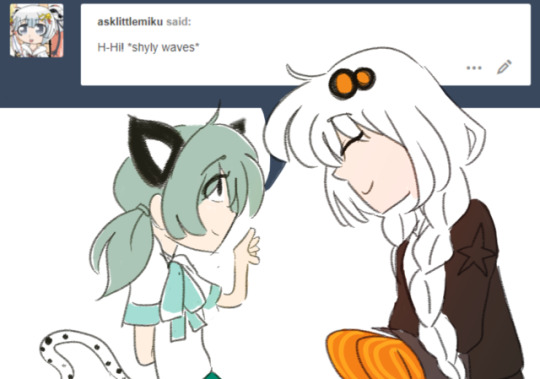
AKARI: Hello there! I like your tail.
AKARI: Have you ever braided your hair?
@asklittlemiku
#vocaloid#vocaloid4#voiceroid#voiceroid 2#akari kizuna#{{thank you for th ask! sorry for taking so long!!}}#asklittlemiku#hatsune miku
17 notes
·
View notes